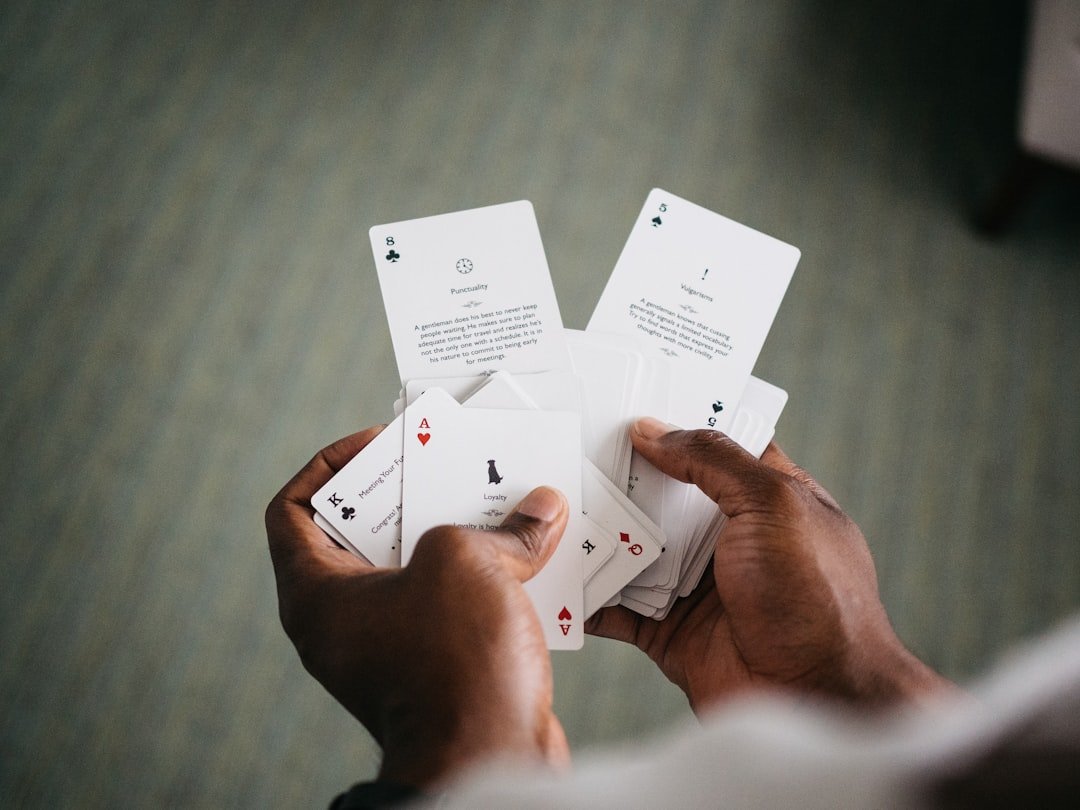Now Reading: Embracing Death: Games of Fun and Challenge
-
01
Embracing Death: Games of Fun and Challenge
Embracing Death: Games of Fun and Challenge

Death is a universal experience that every living being must face, yet it remains one of the most enigmatic and daunting aspects of existence. As I ponder the concept of death, I find myself grappling with its implications on life, identity, and the human experience. It is a phenomenon that evokes a myriad of emotions, from fear and sadness to acceptance and even curiosity.
The finality of death can be overwhelming, leading many to seek understanding through various lenses—philosophical, spiritual, and even scientific.
In contemplating death, I often reflect on how different cultures and societies perceive it.
Some view it as a natural part of the life cycle, while others see it as a tragic end. This dichotomy shapes our attitudes toward mortality and influences how we cope with the inevitable. I have learned that understanding death can lead to a deeper appreciation for life itself.
By confronting the reality of mortality, I am encouraged to cherish each moment, to embrace the fleeting nature of existence, and to find meaning in the relationships and experiences that define my journey.
Key Takeaways
- Understanding the concept of death is essential for exploring its role in games and play.
- Games can serve as a coping mechanism for mortality, providing a safe space to confront and process the concept of death.
- Embracing death through playful challenges can help individuals develop a healthier relationship with mortality.
- Exploring the cultural and historical significance of death in games can provide valuable insights into different perspectives on mortality.
- Finding joy and laughter in games that embrace death can help individuals approach the topic with a sense of lightness and humor.
The Role of Games in Coping with Mortality
Confronting Fears
Through gameplay, I can confront my fears in a controlled environment, allowing me to process complex emotions surrounding mortality without the weight of real-world consequences.
Exploring Mortality
This interaction with death in games allows me to explore the concept in a way that feels safe and engaging. I can experiment with different outcomes, learn from failures, and ultimately gain insights into my own life and choices.
Lessons in Resilience
The act of playing becomes a metaphor for resilience, teaching me that while death is inevitable, it is also an opportunity for growth and transformation.
Embracing Death through Playful Challenges

Embracing death through playful challenges has become an intriguing aspect of my gaming experience. Many games incorporate elements that encourage players to face their fears head-on, often through humor or absurdity. This playful approach allows me to engage with the concept of death in a way that feels less intimidating. For instance, games that feature whimsical depictions of death or lighthearted narratives about mortality invite me to laugh at what is often considered a somber topic. This juxtaposition creates a space where I can explore my feelings about death without the heaviness that typically accompanies such discussions.
As I navigate these playful challenges, I find that they often lead to deeper reflections on life itself. The absurdity of certain game scenarios can serve as a reminder not to take life too seriously. By engaging with death in a lighthearted manner, I am encouraged to appreciate the fleeting moments and find joy in the journey rather than fixating solely on the destination.
This playful exploration fosters resilience and adaptability, qualities that are essential when confronting the realities of life and death.
Exploring the Cultural and Historical Significance of Death in Games
The cultural and historical significance of death in games is a fascinating area that has captured my interest. Throughout history, various cultures have used games as a means to explore mortality, often reflecting societal attitudes toward death and the afterlife. From ancient rituals involving games of chance to modern video games that tackle existential themes, the representation of death in play has evolved significantly over time.
As I delve into this rich tapestry, I am struck by how these representations reveal much about our collective psyche and cultural values. In many traditional games, death is often intertwined with themes of fate and destiny. For example, ancient board games like Senet or the Game of Life reflect beliefs about the afterlife and the journey beyond this world.
As I engage with these historical contexts, I gain insight into how different societies have grappled with mortality and sought to make sense of the unknown. This exploration not only enriches my understanding of gaming but also deepens my appreciation for the diverse ways in which humanity has approached the concept of death throughout history.
Finding Joy and Laughter in Games that Embrace Death
Finding joy and laughter in games that embrace death has become an essential part of my gaming experience. Many contemporary games tackle serious themes with humor and wit, allowing players to engage with mortality in a way that feels accessible and relatable. For instance, titles like “Undertale” or “Death Stranding” incorporate elements of dark humor or absurdity while addressing profound questions about life and death.
These games remind me that even in the face of mortality, there is room for laughter and lightness. As I immerse myself in these playful narratives, I discover that humor can serve as a powerful coping mechanism. It allows me to confront uncomfortable truths while simultaneously providing relief from the weight of those truths.
By laughing at the absurdities of life and death within the context of gameplay, I am reminded that joy can coexist with sorrow. This balance enriches my experience as a player and encourages me to approach life’s challenges with a sense of humor and resilience.
Embracing Death as a Source of Inspiration in Game Design

Embracing Death as a Source of Inspiration in Game Design
Death as a Catalyst for Compelling Narratives and Gameplay Mechanics
The exploration of death in game design has resulted in some of the most innovative and thought-provoking experiences in gaming history. As I delve into various titles, I am often struck by how designers use themes of mortality to create compelling narratives and gameplay mechanics. The exploration of death can lead to unique storytelling opportunities, enabling players to engage with complex emotions and moral dilemmas.
The Power of Personal Experience in Game Design
This creative approach not only enhances gameplay but also invites players like myself to reflect on their own lives and choices. In many cases, game designers draw upon their own experiences with loss or existential questions when crafting their narratives. This personal touch adds depth to the gameplay experience, making it resonate on a more profound level.
Transformative Experiences that Celebrate Life
As I engage with these thoughtfully designed games, I find myself inspired by the courage it takes to confront such heavy themes through art. The result is often a transformative experience that encourages me to reflect on my own relationship with mortality while celebrating the beauty of life.
The Psychological Benefits of Engaging with Mortality through Games
Engaging with mortality through games offers numerous psychological benefits that have become increasingly evident in my own experiences. By confronting themes of death within a safe environment, I am able to process my fears and anxieties without the immediate pressures of reality. This engagement allows me to explore my feelings about loss, grief, and acceptance in a way that feels manageable.
The act of playing becomes a therapeutic outlet, providing me with tools to navigate my emotions more effectively. Research has shown that engaging with mortality through play can foster resilience and emotional growth. As I face challenges within games that mirror real-life struggles with loss or uncertainty, I develop coping strategies that extend beyond the virtual world.
The lessons learned through gameplay often translate into my everyday life, helping me approach difficult situations with greater confidence and clarity. Ultimately, this engagement serves as a reminder that while death is an inevitable part of life, it can also be a catalyst for personal growth and transformation.
Embracing Death as a Theme in Board Games and Card Games
Board games and card games have long embraced death as a theme, offering players unique opportunities to engage with mortality in creative ways. As I explore various tabletop experiences, I am often struck by how these games incorporate elements of strategy, chance, and storytelling to address themes related to life and death. Whether it’s navigating perilous quests or making difficult decisions about sacrifice and survival, these games invite me to confront mortality while fostering camaraderie among players.
In many cases, board games like “Betrayal at House on the Hill” or card games like “Gloom” use humor and suspense to create engaging narratives centered around death. These experiences allow me to bond with friends over shared challenges while simultaneously exploring deeper questions about existence. The social aspect of tabletop gaming enhances this exploration, creating an environment where we can discuss our thoughts on mortality openly while enjoying each other’s company.
The Intersection of Death and Fun in Video Games
The intersection of death and fun in video games is a fascinating dynamic that has shaped my gaming experiences over the years. Many modern titles cleverly blend serious themes with engaging gameplay mechanics, allowing players like myself to grapple with mortality while still having fun. Games such as “Dark Souls” or “Hollow Knight” challenge players to confront their own limitations while navigating beautifully crafted worlds filled with danger and intrigue.
This balance between challenge and enjoyment creates an engaging experience that encourages me to push my boundaries while reflecting on deeper existential questions. The thrill of overcoming obstacles related to death—whether it’s defeating formidable foes or navigating treacherous environments—adds an exhilarating layer to gameplay. In this way, video games become not just an escape from reality but also a platform for exploring profound themes related to life and mortality.
Embracing Death in Physical Activities and Sports
Embracing death in physical activities and sports offers another dimension through which I can engage with mortality. Many sports inherently involve risk—whether it’s extreme sports like rock climbing or contact sports like football—where athletes must confront their own limitations and vulnerabilities. As I participate in these activities, I am reminded of the fragility of life and the importance of living fully in each moment.
This awareness fosters a sense of respect for both myself and others as we navigate challenges together on the field or in nature. Engaging in physical activities allows me to celebrate life while acknowledging its impermanence. The adrenaline rush associated with pushing my limits serves as a reminder that while danger may lurk around every corner, it is also an opportunity for growth and self-discovery.
Embracing Death: The Importance of Balance and Respect in Gaming
Ultimately, embracing death within gaming requires balance and respect for its significance in our lives. As I navigate this complex theme across various forms of play—be it video games, board games, or physical activities—I recognize the importance of approaching mortality with sensitivity and thoughtfulness. While humor and lightheartedness can provide relief from heavy topics, it is essential not to trivialize the profound impact that death has on individuals and communities.
Finding this balance allows me to engage meaningfully with themes related to mortality while fostering connections with others who share similar experiences or perspectives. By respecting the gravity of death while also celebrating life through playfulness, I can create an enriching gaming experience that honors both aspects equally. In doing so, I cultivate a deeper understanding not only of myself but also of the shared human experience we all navigate together.
In conclusion, exploring the multifaceted relationship between death and gaming has enriched my understanding of both concepts profoundly. Through playful challenges, cultural reflections, psychological insights, and social connections fostered by gameplay experiences centered around mortality, I have come to appreciate how engaging with this theme can lead to personal growth and transformation. Ultimately, embracing death within gaming serves as both an invitation for reflection on life’s fragility while celebrating its beauty—a delicate balance that continues to inspire me on my journey through play.
If you’re interested in exploring the concept of dying in games as part of the fun, you may also enjoy reading about the importance of optimal performance and control settings in gaming.

















